Here is a comprehensive historical timeline with the key political events from the History of Fascist Italy, from 1919 until 1945.
1919
January: At the Treaty of Versailles, the territorial demands of Italy(Northern Dalmatia, the Port of Fiume, and colonies in North Africa) are refused by the Allied powers(USA, Great Britain, and France).
This refusal led to the creation of the “mutilated victory” myth, which will become one of the main catalysts behind the rise of Fascism.
1919-1920
These years are better known in Italian history as” Biennio Rosso”(Two Red Years)

Demobilization, high inflation, and unemployment contributed to a massive surge in both popularity and membership of the left-wing Italian parties(Socialist and Communist).
As a result both Socialists and Communists continuously organized worker strikes, occupied the factories, and demanded the overthrow of the Italian government.
1919
March 23: Benito Mussolini forms the first “Fascia di Cambattimenta”(Combat group) thus marking the beginning of the Italian Fascist Party.
The event took place 5 days after a huge Socialist strike.
1919
November: Italian parliamentary elections. Benito Mussolini’s newly formed political movement suffers a terrible defeat.
None of the fascist candidates were elected and even Benito Mussolini gathers only 5000 votes in Milan, from a total of 270.000.
Far from being discouraged, the Fascists now resort to crushing the Socialist/Communist strikes to boost their popularity with the landowners and industrialists.
1921
February: number of fascist supporters reaches 100.000 people. By the end of October 1922, the total membership of the Fascist movement will rise to 300.000.
November 09: The National Fascist Party is officially created
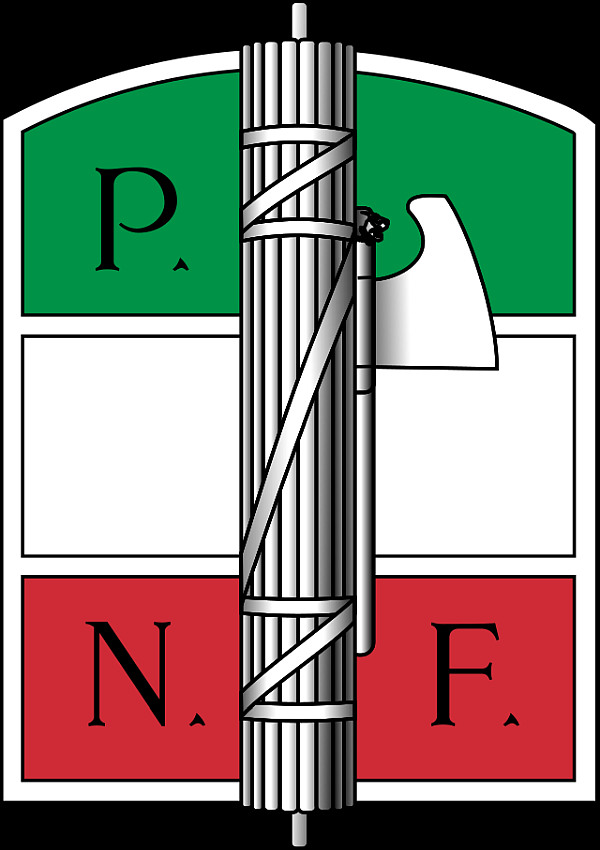
November: After numerous clashes between the Squadristi and the supporters of Socialism/Communism, Mussolini’s movement gained enough popularity that it could no longer be ignored by traditional Italian political parties.
Giovanni Giolitti offers Mussolini the chance to form together an anti-socialist coalition so they can boost their chances at the Italian Parliamentary elections of November 1921.

As a result of these elections, the Fascist gain 7% of the votes and 35 seats in the Italian Parliament.
The Socialists despite being continuously attacked by the Fascists still manage to retain their dominant position(123 seats).
1922
October 27: The “March on Rome” begins.

After previously gaining support from the industrialist, bankers, nationalist groups, and other right-wing groups, Mussolini organizes a coup d’etat.
30.000 “Blackshirts” organized in four columns led by Emilio De Bono, Italo Balbo, Michele Bianchi, and Cesare Maria de Vecchi would assault Rome with the clear aim of taking all political power in Italy.
The Italian King, not wanting to enact martial law, decides to give up and surrenders the power to the Fascists.
October 30: Benito Mussolini’s appointed as Prime Minister of Italy by King Victor Emmanuel III.
Mussolini would create and lead a right-wing coalition government.
At this point, Italy didn’t become a Full Fascist State, this only signifies the beginning of the Power Takeover by the Fascists.
1923
April: All PPI ministers(Italian People’s Party) from the first Government of Benito Mussolini are sacked.
August-September: Corfu Incident is exploited by Mussolini to boost his prestige and popularity.
November: The Fascist electoral law, better known as the Acerbo Law, is passed with a majority by the Italian Parliament.

According to this law, the political coalition that won the most electoral votes with a majority of 25% would automatically gain two-thirds of the seats in the Italian Parliament.
The passing of this law would allow the Fascists to obtain total political domination.
All they needed now was to win the next general elections.
1924
April 6: Italian General Elections are held under the new Acerbo Law.

Benito Mussolini’s Fascist coalition, known as the National List, wins nearly 65% of the popular vote and automatically 374 seats from the total of 535 in the Italian Parliament
These elections were far from being fair since intimidation of the anti-fascist voters and massive voting fraud were common practices.
May 30: Giacomo Matteotti, leader of the Unitarian Socialist Party, denounces to the Chamber of Deputies the abuses and crimes perpetrated by the fascists during the electoral campaign.
June 10: Giacomo Matteotti, leader of the Unitary Socialist Party and vocal opposition figure is kidnapped by Fascist thugs and assassinated.

July: Press Censorship is introduced
1925
June: Last Congress of the Italian Fascist Party. Benito Mussolini bans all internal debates/arguments within the party.
December: Independent trade unions and opposition parties are banned
The start of the First “Battle of Grain”
1926
-The right to strike is completely abolished
-Beginning of the “Battle for the land”

Beginning of the “Battle for the lira”
-January: Mussolini gained the right to make laws without any approval by the Parliament
-The Fascist Youth Movement, known as Opera Nazionale Barilla(ONB) is created
1927
The Italian Lira is revalued.
-The “Battle for Births” begins, Mussolini and the fascists enact a series of laws with the goal of increasing the population of Italy.
Mussolini’s goal was to increase Italy’s population from 40 million to 60 million before 1950.
–OVRA: the Italian Secret Police was created. Its purpose was to track and eliminate the anti-Fascist opposition.
1928
March 16: The Chamber replaces the elections with a plebiscite, and the single national list is established.
1929
The Great Economic Depression hits the Italian economy. Unemployment rises to 2 million people and car production declined by nearly 50%.
February 11: Lateran Treaty is signed
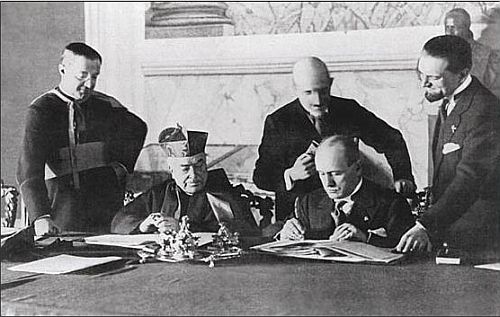
Fascist Italy recognizes Vatican City as an independent state controlled by the Papacy.
The treaty ends the historical dispute between the Italian State and the Papacy and secures Catholic community support for Fascism.
All teachers were obliged to swear an oath of loyalty to the Fascist regime
1933
January: The Institute for Industrial Reconstruction (IRI) is created.
With the help of this institution, the Italian State greatly extends its control over the economy.
1935
April 11-14: The “Stresa Front” agreement is signed between Fascist Italy, Great Britain, and France. The 3 major powers attempted to create a united front against the rise of Nazi Germany.

The coalition will only last a few months.
October: The invasion of Ethiopia(Abyssinia) begins.

1936
September: Fascist Italy send military aid and troops to aid the Spanish Nationalists fighting in the Civil War.
November: Benito Mussolini proclaims the existence of the “Rome-Berlin” Axis. It was the beginning of the German-Italian Alliance.

1937
November: Fascist Italy joins the Anti-Comintern Pact
December 11: Fascist Italy exists the League of Nations
1938
The first Anti-Jew racial laws are introduced
August: Foreign Jews are banned from school participation
October: Jews are excluded from the Fascist Party
November: Jews are forbidden to marry non-Jewish People
November: Benito Mussolini demands the territorial annexations of the French-controlled territories of Nice, Corsica, and Tunis.
1939
January: The Italian Parliament is abolished and replaced by the Chamber of Fasces and Corporations.
April: Albania is invaded and occupied by the Italian armies.

May 22: The “Pact of Steel” between Fascist Italy and Nazi Germany is signed.
1940
June 10: Benito Mussolini declares war against Great Britain and France and officially joins the war on Nazi Germany’s side.
September 09: Italian invasion of Egypt
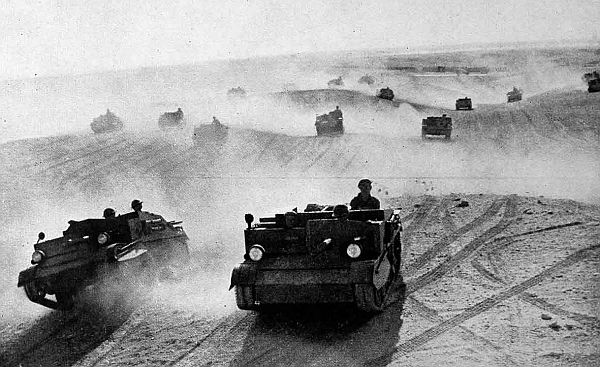
September 27: The Tripartite Pact between Germany, Italy, and Japan is signed.
October: Italian invasion of Greece. The invasion will end badly for the Italian army because of the brave resistance of the Greek army.
November: the Italian army’s advance into Egypt is repelled by the British troops.
1942
November: the Russian counter-offensive at Stalingrad destroys the majority of the Italian forces on the Eastern Front.
1943
January: Unable to stop the Allied advance, Libya is evacuated by the Italian and German troops.
July 09: Operation Husky, the Allied naval invasion of the Island of Sicily begins.

In the following weeks, the combined Italian and German armies’ resistance collapses and the island is occupied by the Allies.
The success of this military operation will lead to Mussolini’s downfall.
July 25: Benito Mussolini is deposed and then arrested after the success of a well-organized coup d’etat.
The coup was organized by the Grand Fascist Council and had the support of Victor Emmanuel III.
Pietro Badoglio is appointed Prime Minister and secret peace negotiations with the Allies start.
September 08: The Cassibile Armistice, Italy officially declares the signing of the armistice with the Allies and the exit from the Axis.
September 12: After being moved between many Italian prisons, Benito Mussolini is rescued with the help of the German paratrooper units led by Otto Skorzeny.
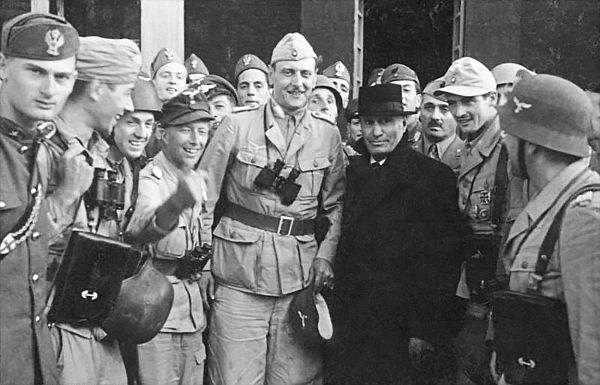
September 23: After returning to Italy as the leader of a puppet regime created by the Nazis,
Benito Mussolini proclaims the creation of the” Italian Socialist Republic” also known as the “Salo Republic”.
Salo was a small Italian town, where Mussolini established his new headquarters.
1944
June 04: The American forces enter Rome and liberate the city
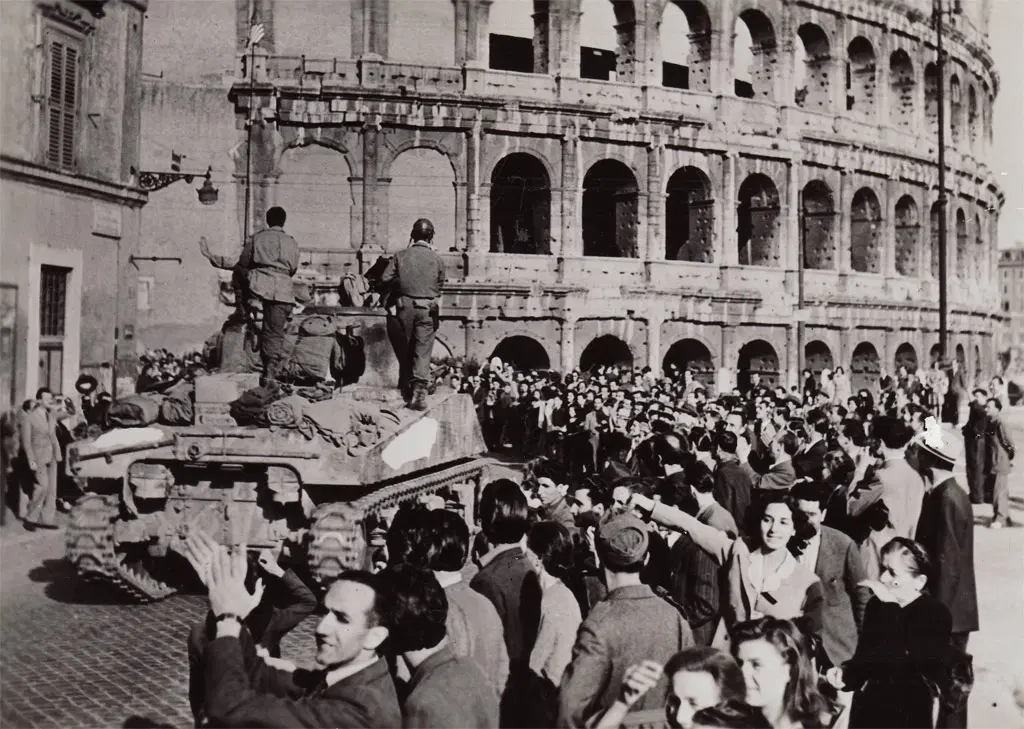
December: Mussolini gives his last public speech in Milan
1945
April 25: The Italian Partisans start a major uprising in the remaining controlled Axis cities in Northern Italy.
April 28: Benito Mussolini and his mistress Clara Petacci are captured while attempting to flee by Italian communist partisans.
Both Il Duce and his mistress were shot and killed by the Italian partisan forces and their bodies were put on display in Milan.
April 29: Unconditional surrender of the remaining German forces in Italy.
